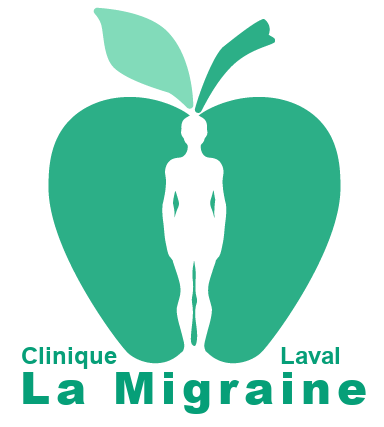We fully understand what you’re going through: Finally relieve your ophthalmic migraines.
Ophthalmic migraine is much more than just a headache. Visual disturbances, bright spots, blurred areas, or even temporary vision loss… These symptoms can be distressing and deeply disrupt your daily life. We understand how challenging this can be to manage.
At the Clinic La Migraine, we have dedicated over twenty years to studying and treating various forms of migraines, including ophthalmic migraines. We know how to identify the signs, causes, and impacts on your personal and professional life. We are here to provide concrete solutions tailored to your situation.
>Tangible Solutions, Proven Results
-
Reduction of over 70% in the intensity, frequency, or duration of episodes in the greater majority of our patients.
-
Personalized approaches tailored to your history and lifestyle.
-
Over 20 years of proven expertise in treating chronic, hormonal, vestibular migraines, and more.
>A team that understands and supports you.
- Attentive listening to your unique situation and needs.
- Treatment plans tailored to your progress, continuously reviewed for optimal effectiveness.
- Compassionate care with Dr. Daniel Lachance, chiropractor, to help you take control of your life again.
>Don’t let ophthalmic migraines dictate your days anymore.
You deserve to regain peace and freedom. Contact us today to make an appointment and discover how our methods can alleviate your ophthalmic migraines… or even make them disappear.
Contact us now or call 450-689-1223.
Life is too short to spend it in pain. Don’t wait any longer: you have the right to live fully.
Some Terms Related to Ocular Migraines (i.e., related to the eyes)
Migraines with Aura: Characterized by neurological symptoms, primarily visual disturbances, that precede the headache phase, signaling its onset.
Ocular Migraines: Involve temporary loss of vision, monocular or visual disturbances, not necessarily accompanied by a headache, indicating transient involvement of the retina or optic nerve.
Migraines Affecting the Orbital Region: Characterized by localized pain around the eye or in the orbital region, often accompanied by typical migraine symptoms but with a distinct focus on the location of the pain.
Retinal Migraines: Defined by repeated episodes of unilateral visual disturbances, including blindness, preceding or accompanying a migraine headache, suggesting retinal vasospasm.
On this page, mention of migraine with aura primarily refers to associated visual manifestations, which are present in nearly 90% of individuals with migraines with aura.
Navigating Through Ophthalmique Migraines
What is the difference between ocular migraines and other migraines?
You may hear people use the terms “ocular migraine” and “retinal migraine” interchangeably. However, they are not the same. The term “ophthalmic migraine” (ocular) was mainly used in the past to describe what is now called migraine with aura. These two terms are often used to refer to two different conditions: migraine with aura, which is usually benign, and retinal migraine, which could indicate something more serious.
Although ocular and retinal migraines share some symptoms, there are major differences between the two. Ocular migraines often involve visual symptoms that affect both eyes simultaneously, while retinal migraines can be unilateral and involve alterations in the retina. Generally, the term “ophthalmic migraine” refers to any headache that causes temporary changes in vision. About 90% of people with migraines with aura fall into this category. In contrast, retinal migraine describes a more specific condition: it is monocular, meaning it affects only one eye. Thus, a retinal migraine is actually a type of ocular migraine.

Symptoms
The symptoms of ocular migraines are focused on visual disturbances, namely visual auras. These auras typically last from five minutes to an hour and can sometimes occur without headaches. Visual disturbances during a migraine aura are common. Visual auras often (but not limited to) include:
-
Scintillations (usually in a C-shape)
-
Zigzag lines
-
Tunnel vision
-
Sometimes, temporary loss of partial or total vision.
For more details, please refer to our page on migraines with aura.
Regarding retinal migraines, the defining characteristics according to the ICHD-3 are as follows:
A. Attacks meeting the criteria for migraine with aura 1.2 (see migraines with aura) and criterion B below
B. Aura characterized by the following two elements:
-
-
Positive and/or negative visual phenomena, fully reversible, monocular (for example, scintillations, scotomata, or blindness) confirmed during an attack by either of the following:
-
Clinical examination of the visual field
-
The patient’s drawing depicting a monocular visual field defect (made after clear instructions)
-
-
at least two of the follow aspects:
-
spreads gradually over ≥5 minutes
-
symptoms last 5-60 minutes
-
accompanied, or followed within 60 minutes, by headache
-
-
C. Not better accounted for by another ICHD-3 diagnosis, and other causes of transient monocular blindness have been excluded.
Retinal migraine is an extremely rare cause of transient monocular visual loss. Appropriate investigations are necessary to exclude other causes of transient monocular blindness. (ICHD-3)
As with all migraines, it is recommended to consult a doctor or healthcare professional for an official diagnosis. It is also crucial to undergo testing with a doctor in a clinic or hospital if you have recently started experiencing migraines for the first time to rule out any serious possibilities such as an aneurysm or meningitis.
Contact Form– We’re accepting new patients
We would be delighted to assist you and discuss your migraines. No referral is necessary. Simply fill out this form and submit it, and we will get in touch with you.
You are on the right path to your first consultation and relief from migraines!
or call us:

